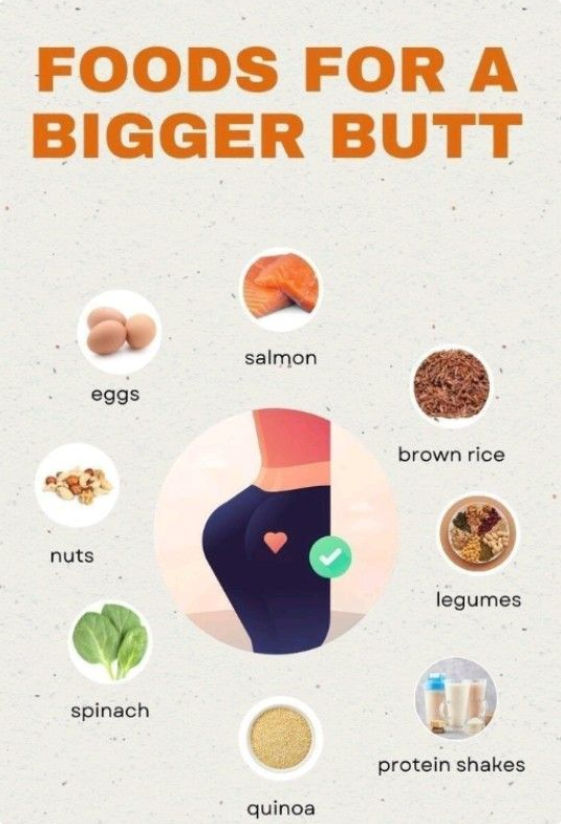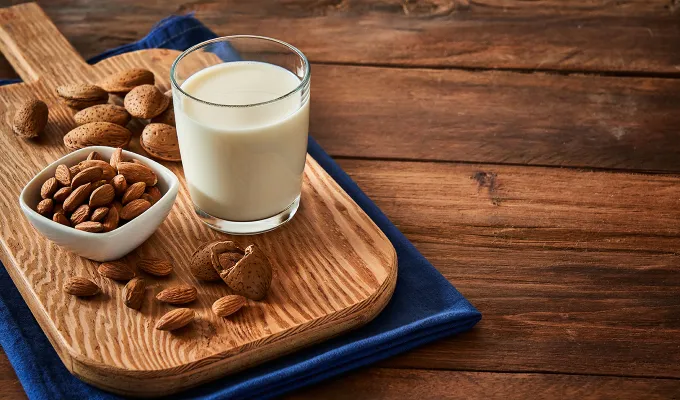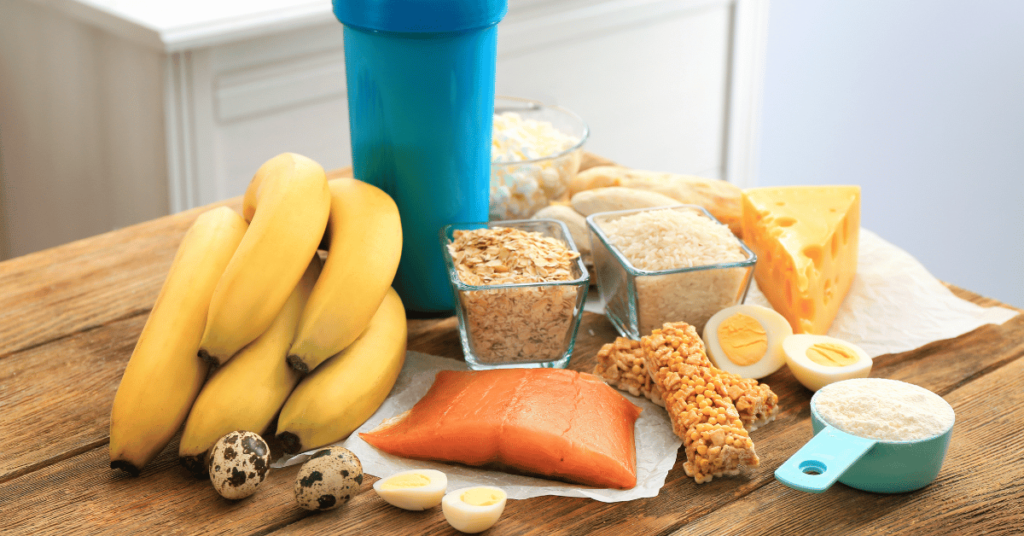Food plays a significant role in shaping your body, including your glute muscles. As someone passionate about fitness and nutrition, I’ve researched and tested various foods that can support muscle growth and enhance your glute size naturally. In this guide, I’ll share the top 10 foods that provide the nutrients necessary to fuel your workouts and promote muscle development. Whether you’re aiming to build strength or improve your physique, incorporating these foods into your diet can help you achieve your goals more effectively.
Key Takeaways:
- Consuming protein-rich foods like lean meats, eggs, and legumes supports muscle growth, which is vital for enhancing glute size naturally.
- Incorporating healthy fats from sources such as avocados, nuts, and olive oil helps provide the energy and nutrients necessary for muscle development.
- Carbohydrate-rich foods like sweet potatoes and whole grains offer sustained energy to fuel workouts that target glute muscles effectively.
Understanding Glute Anatomy
Before entering into foods that enhance your glute size, it’s important to understand the anatomy of your glutes. Your gluteal muscles play a key role in shaping your hips and were designed for both movement and strength. By learning about these muscles and how they work, you can make better choices in your diet and exercise routines that specifically target glute growth. Understanding your body’s structure allows you to support it effectively, ensuring that your efforts to enhance your glutes are well-informed and efficient.
Types of Glute Muscles
For optimal glute development, it helps to know the distinct muscles involved. Here’s a quick breakdown:
| Gluteus Maximus | The largest muscle, responsible for the bulk of your butt’s shape and strength. |
| Gluteus Medius | Located on the outer surface of your pelvis, it helps with hip stabilization and movement. |
| Gluteus Minimus | The smallest muscle, situated beneath the gluteus medius, aiding in hip rotation. |
| Tensor Fasciae Latae | A small muscle assisting with hip flexion and abduction, supporting glute function. |
| Adductor Magnus | While not part of the glutes, it supports hip movement and glute engagement. |
Knowing these muscles allows you to target specific areas for growth, giving you a more sculpted and balanced look.
Factors Influencing Glute Size
Some of the main influences on your glute size include genetics, exercise, nutrition, and lifestyle habits.
- Genetics: Your natural muscle composition and fat distribution set the foundation.
- Exercise: Resistance training, especially squats and lunges, stimulates muscle growth.
- Nutrition: Protein intake and calories support muscle repair and hypertrophy.
- Hormones: Levels of hormones like testosterone and estrogen impact muscle development.
- Recovery: Rest and sleep are vital for muscle growth and preventing injury.
Perceiving these factors can help you optimize your approach to enhance your glute size naturally.
With a deeper understanding of what influences your gluteal muscles, I want you to focus on these key areas:
- Consistency in targeted workouts like hip thrusts and deadlifts is vital to stimulate growth.
- Balanced nutrition that prioritizes lean proteins and healthy fats supports muscle building.
- Adapting to your body’s recovery needs with adequate sleep and avoiding overtraining helps maintain progress.
- Incorporating variety in your exercises can stimulate different parts of the glutes effectively.
- Tracking your progress with measurements or photos keeps you motivated and informed.
Perceiving these elements as part of an integrated approach will set you on the right path toward naturally enhancing your glute size.
Top 10 Foods for Glute Enhancement
Even with targeted workouts, your diet plays a significant role in enhancing glute size. Including the right foods helps build muscle and promotes fat distribution in the desired areas. I’ve found that focusing on nutrient-dense options supports your overall fitness goals while naturally boosting your glute development.
Protein-Rich Foods
An adequate protein intake is necessary for muscle growth and repair, especially when focusing on your glutes. Lean meats, eggs, dairy, legumes, and protein-rich plant sources provide the amino acids your muscles need to recover and grow bigger. Including these consistently in your meals maximizes the benefits of your exercise routine.
Healthy Fats
Fats are necessary for hormone production, including those involved in muscle growth. Healthy fats from sources like avocados, nuts, seeds, and olive oil help support your body’s natural processes, which can aid glute enhancement alongside your training.
Healthy fats provide more than just energy. They help regulate inflammation and support cell function, which are important when you’re working on muscle building. Adding them to your diet also promotes better nutrient absorption from other foods, enhancing overall results when targeting glute size.
Carbohydrate Sources
Some carbohydrate sources deliver sustained energy needed for intense lower-body workouts. Whole grains, sweet potatoes, fruits, and vegetables give you the fuel required for your muscles to perform and recover efficiently, ultimately contributing to glute growth.
Carbohydrate quality significantly impacts your training efforts. Choosing complex carbs over simple sugars means you get longer-lasting energy and better blood sugar control, necessary for consistent workouts. Plus, these carbs provide fiber and micronutrients that keep your body well-nourished and primed for muscle building.
Tips for Incorporating Foods into Your Diet
Despite busy schedules and dietary restrictions, you can easily include glute-enhancing foods in your daily meals. Focus on nutrient-dense options and vary your intake to keep meals enjoyable. Here are some helpful strategies:
- Prepare meals in advance to avoid last-minute unhealthy choices
- Combine protein-rich foods with healthy fats and complex carbs
- Snack on nuts and seeds for a quick energy boost
- Include a variety of colorful vegetables and fruits in your diet
After establishing these habits, you’ll find it easier to maintain a balanced diet that supports your goals.
Meal Planning Strategies
With thoughtful meal planning, you can ensure your diet consistently supports glute growth. I suggest mapping out your weekly meals to include key ingredients that promote muscle building, such as lean proteins, legumes, and healthy fats. Batch cooking and freezing portions saves time and keeps you on track, while diversifying your recipes prevents monotony. Planning also helps in grocery shopping efficiently, ensuring you have all necessary items and minimizing food waste. Overall, a well-structured meal plan aligns your nutrition with your fitness objectives.
Portion Control Techniques
On the journey to enhancing your glute size naturally, managing portion sizes is imperative for optimal nutrient intake. Using smaller plates, measuring servings, and being mindful of hunger cues can help prevent overeating. I advise balancing your plate with the right amounts of protein, carbohydrates, and healthy fats to fuel muscle growth without excess calories. Tracking your portions regularly encourages consistency and awareness of your eating habits, which supports sustained progress.
Another effective approach involves using intuitive eating to gauge your true hunger and fullness signals. This method fosters a healthy relationship with food and prevents mindless consumption. Incorporating visual cues, like filling half your plate with vegetables and limiting starches, also makes portion control simpler. By combining these techniques, you can tailor your intake precisely to your body’s needs while promoting glute development.
Step-by-Step Guide to Building Glute Size
All steps to effectively build glute size revolve around proper planning and consistency. Below, I outline the vitals in a clear format:
| Step | Description |
|---|---|
| Nutrition | Consume foods rich in protein, healthy fats, and complex carbs to fuel muscle growth. |
| Exercise | Incorporate targeted glute exercises with progressive overload. |
| Rest & Recovery | Allow muscles to repair with adequate sleep and rest days. |
| Consistency | Maintain a regular routine for optimal long-term results. |
Combining Nutrition with Exercise
Exercise alone won’t build your glutes effectively. I emphasize the importance of pairing your workout routine with a diet that supports muscle growth. Eating protein-rich foods after exercise helps repair and build muscles, while healthy fats and complex carbohydrates provide sustained energy. Balancing the two ensures you maximize your glute-building efforts.
Progressive Strength Training
You need to continually challenge your glute muscles by increasing resistance or intensity in your workouts. This progressive approach encourages muscle adaptation and growth, which ultimately enhances size and strength.
Guide your training by gradually adding weights, increasing repetitions, or trying more challenging exercises over time. Tracking your progress keeps you motivated and ensures your muscles keep developing rather than plateauing.
Pros and Cons of Dietary Changes
Not every dietary change guarantees the same results for everyone. You need to weigh the benefits and potential challenges as you adjust your nutrition for glute enhancement. Understanding both sides helps you make informed choices that suit your lifestyle and goals.
| Pros | Cons |
|---|---|
| Improved muscle growth support | Possible food sensitivities |
| Enhanced metabolism | Time needed to plan meals |
| Better overall health | Initial dietary adjustments can disrupt routine |
| Increased energy levels | Higher cost of certain foods |
| Supports recovery post-exercise | Risk of nutritional imbalances if not monitored |
Benefits of Targeted Nutrition
Even small shifts toward nutrient-dense foods tailored for glute enhancement can significantly impact muscle size and tone. By choosing foods rich in protein, healthy fats, and imperative nutrients, you fuel your body efficiently for growth and repair. This targeted approach helps optimize your workout results, making your efforts more effective without drastically overhauling your entire diet.
Potential Drawbacks to Consider
Potential drawbacks of focusing your diet on specific foods include the risk of developing imbalanced nutrition or becoming too restrictive. You might also experience challenges like food monotony or digestive adjustments when introducing new items. It’s important to remain mindful and adjust progressively.
Benefits of understanding potential drawbacks mean you can proactively avoid pitfalls like nutrient deficiencies or diet burnout. Being informed allows you to create a balanced plan that supports glute growth while maintaining overall health and enjoyment.
Summing up
Drawing together the top 10 foods that naturally enhance glute size, I highlight their powerful role in supporting muscle growth and overall health. By incorporating nutrient-rich options like lean proteins, healthy fats, and complex carbohydrates into your diet, you provide your body with the fuel and building blocks necessary to shape and strengthen your glutes effectively. I encourage you to focus on a balanced approach, combining these foods with consistent exercise to achieve the best results for your physique and well-being.
FAQ
Q: Which foods are best for naturally increasing glute size?
A: Foods that support muscle growth and fat distribution are ideal for enhancing glute size. These include lean proteins like chicken and turkey, healthy fats found in avocados and nuts, complex carbohydrates such as sweet potatoes and quinoa, and nutrient-dense vegetables like spinach and broccoli. Incorporating these into your diet can help provide the nutrients necessary for muscle development and overall glute enhancement.
Q: How do proteins contribute to glute growth?
A: Proteins provide the amino acids needed for muscle repair and growth. Consuming adequate protein helps your glute muscles recover from workouts and grow stronger. Sources like lean meats, eggs, dairy, legumes, and plant-based proteins support this process and assist in building a firmer, larger glute area.
Q: Are healthy fats important for enhancing glute size?
A: Yes, healthy fats play an important role in hormone regulation and fat storage, both of which affect glute size. Foods rich in omega-3 and omega-6 fatty acids—such as avocados, nuts, seeds, and olive oil—can support overall body composition and promote a rounder, fuller appearance in the glute region.
Q: How do complex carbohydrates help with glute enhancement?
A: Complex carbohydrates provide sustained energy needed for physical activities like strength training targeting the glutes. They also contribute to glycogen storage in muscles, which helps maintain muscle fullness and endurance during workouts. Examples include whole grains, sweet potatoes, oats, and brown rice.
Q: Can specific vegetables aid in glute muscle development?
A: Vegetables are rich in vitamins, minerals, and antioxidants that support muscle repair and overall health. Leafy greens such as spinach and kale provide important nutrients like iron and magnesium that enhance muscle function and recovery. Including a variety of colorful vegetables ensures your body receives a well-rounded supply of nutrients to aid glute muscle growth.





